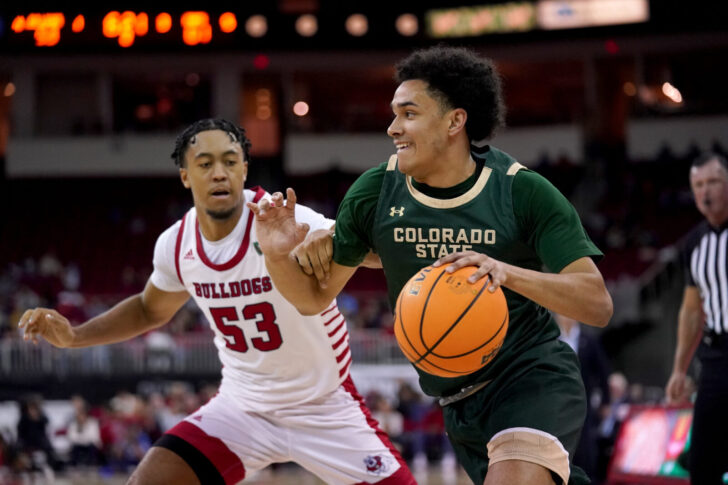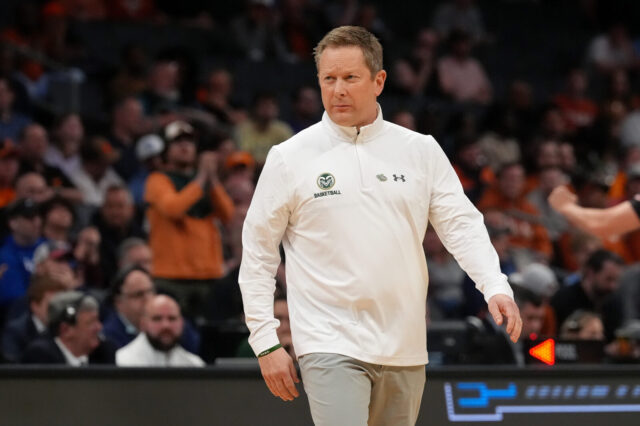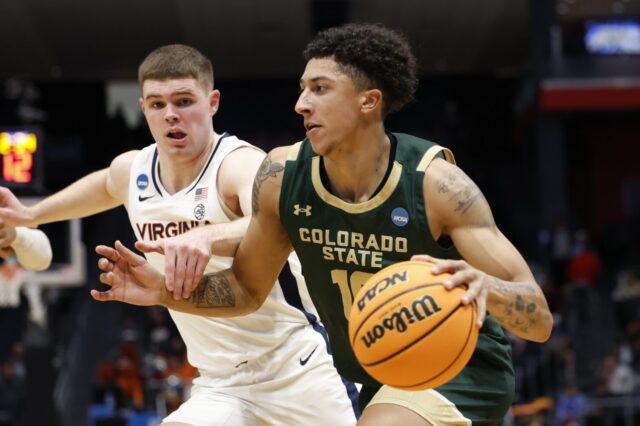Strike 1: The state of Colorado hasn’t been a very hospitable place for visitors coming to compete against our two biggest college basketball programs this season. Combined, the Colorado Buffaloes and the Colorado State Rams are a glistening 26-2 on their home courts, with only No. 16 St. Mary’s (NET Rankings) upending CSU and No. 4 NET/No. 8 AP Arizona taking down CU this past weekend. Among those who have taken an L on the way out the door include a number of teams that are likely to be in the NCAA Tournament, like New Mexico, San Diego State, Boise State (losers at Moby Arena) and Washington State and Oregon, who fell at the CU Events Center. In addition, the Rams knocked off the Buffs in Ft. Collins.
By contrast, each of these teams – both with very good chances to be in the Big Dance come March 17 – have pretty much been roadkill when traveling to other campuses.
They aren’t alone of course. College hoops is filled with teams that flex their muscles at home and shrink up when they travel. Nebraska for example has beaten No. 1 Purdue and No. 11 Wisconsin on their way to posting a 15-1 home court record.
Meanwhile, the Huskers are 1-7 on the road.
The question is why? Why do so many teams, including the Buffs and the Rams, have so much trouble when the other team gets to sleep in their own beds the night before the game?
To be fair, neutral courts have been good for both CU and CSU: The Rams have actually had three very big wins while doing some holiday traveling back in November, beating Creighton, Boston College and Washington on neutral floors, while the Buffs knocked off nationally ranked Miami in New York.
However, when the other team has that home bed advantage and the support of the home crowd, the results have been lousy, to put it nicely.
Colorado is a meager 1-6 in true road games, while CSU remains under .500 at 3-4.
To some extent, it’s like this every year. All teams are going to play better and win more contests at home. Still, this season it seems more extreme than normal.
Rowdy home crowds do play a role. For example, the atmosphere at Moby Arena when the Buffs came to visit was “couldn’t hear yourself think” incredible. To their immense credit, the Buffs played with a lot of composure – especially in the second half – and had that game been in Boulder or even a neutral court, CU would have prevailed.
But the team with the raucous support still won.
Familiarity with the surroundings? Recognizable backdrops? Friendly rims? The courts are the same size. The basket is the same height. It’s loud for both teams most of the game. Maybe the ball bounces differently on different courts?
Not even coaches can put their fingers on it.
Whatever it is, both local squads need to figure it out and adjust, fast.
The 16-8 Buffs have battled the injury bug all season, including facing Arizona with star freshman Cody Williams still battling the effects of a shot to the eye during practice last week. Not being at full strength – and struggling to mesh when they are – CU has lost winnable road games at Arizona State and Cal. Win those and CU is tied for second place in the Pac-12.
The Rams would be atop the rugged Mountain West if they could have beaten pedestrian Wyoming in Laramie and less talented Boise State team in Idaho. Those two losses could end up costing them their first ever MW title.
The bad news is that the road ahead will play a large role in where both teams stand going into March.
Tad Boyle’s team needs to win in LA this week, facing UCLA and USC. Meanwhile, CSU (19-5) has daunting road tasks at San Diego State and New Mexico in the next 10 days. The Buffs still have road games at Oregon and Oregon State as well. They need to win at least two of those four. The Rams hopes for a Mountain West title also hinge on winning at least two if not three of their remaining four away from Moby Arena, including games at UNLV and Air Force.
The Rams are likely already in the NCAA Tournament, with the Buffs sitting firmly on the bubble. Close out the regular season strong, and their positioning in March could end up being favorable. The good news is there’s no home court disadvantage during March Madness.





